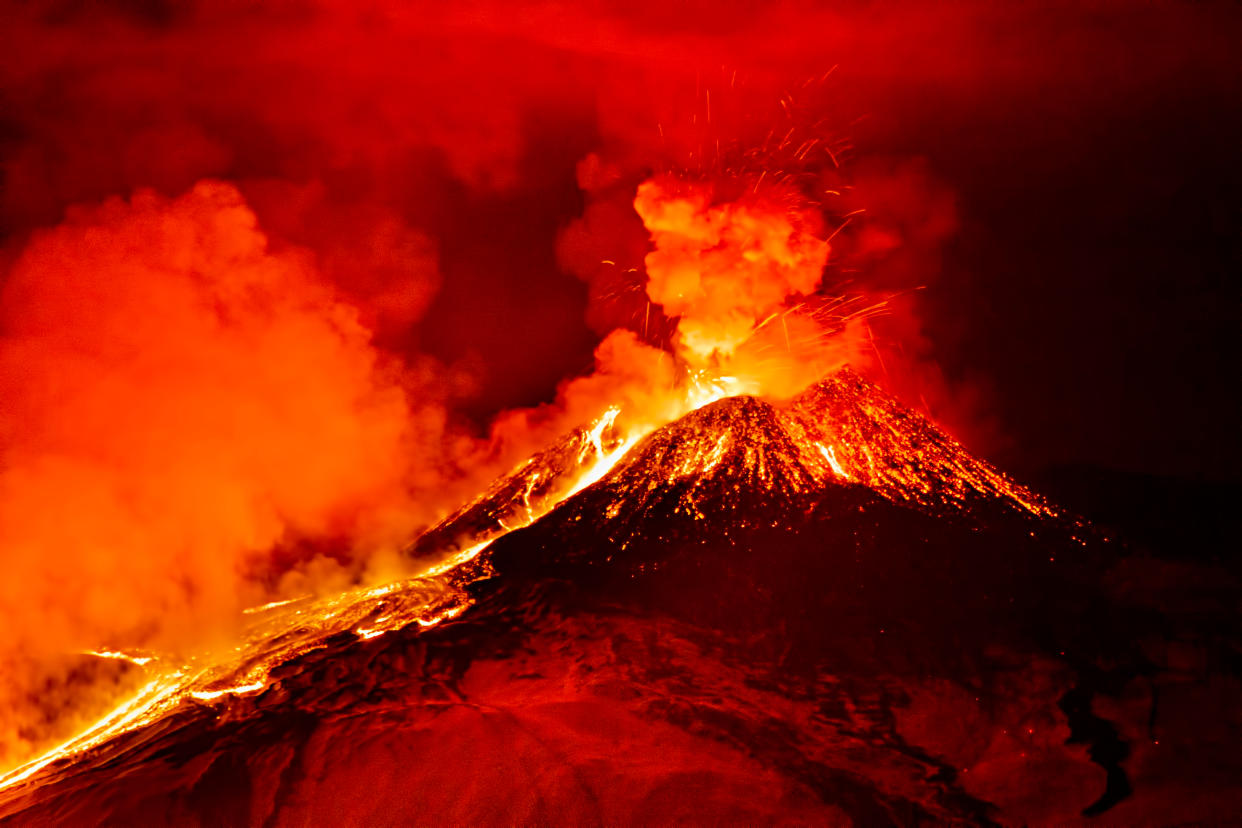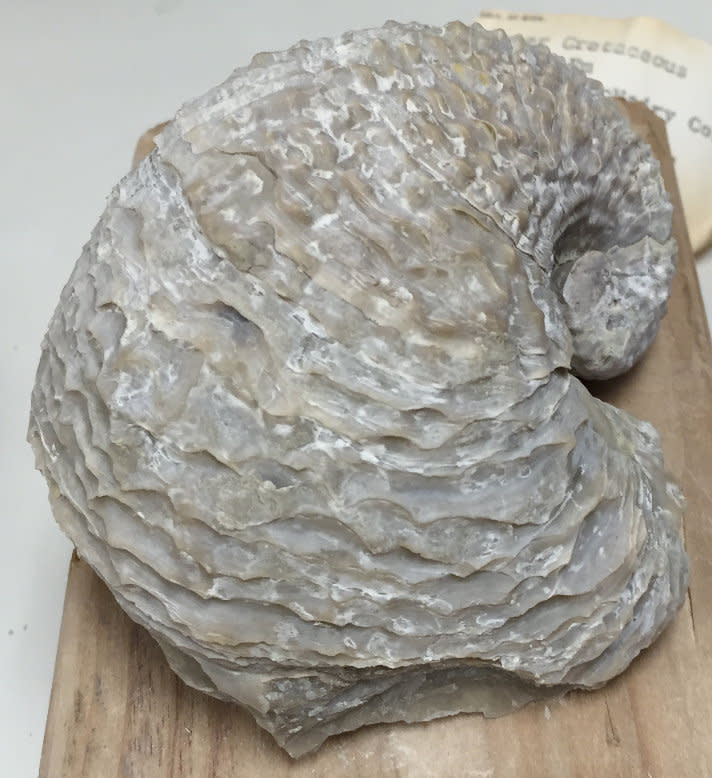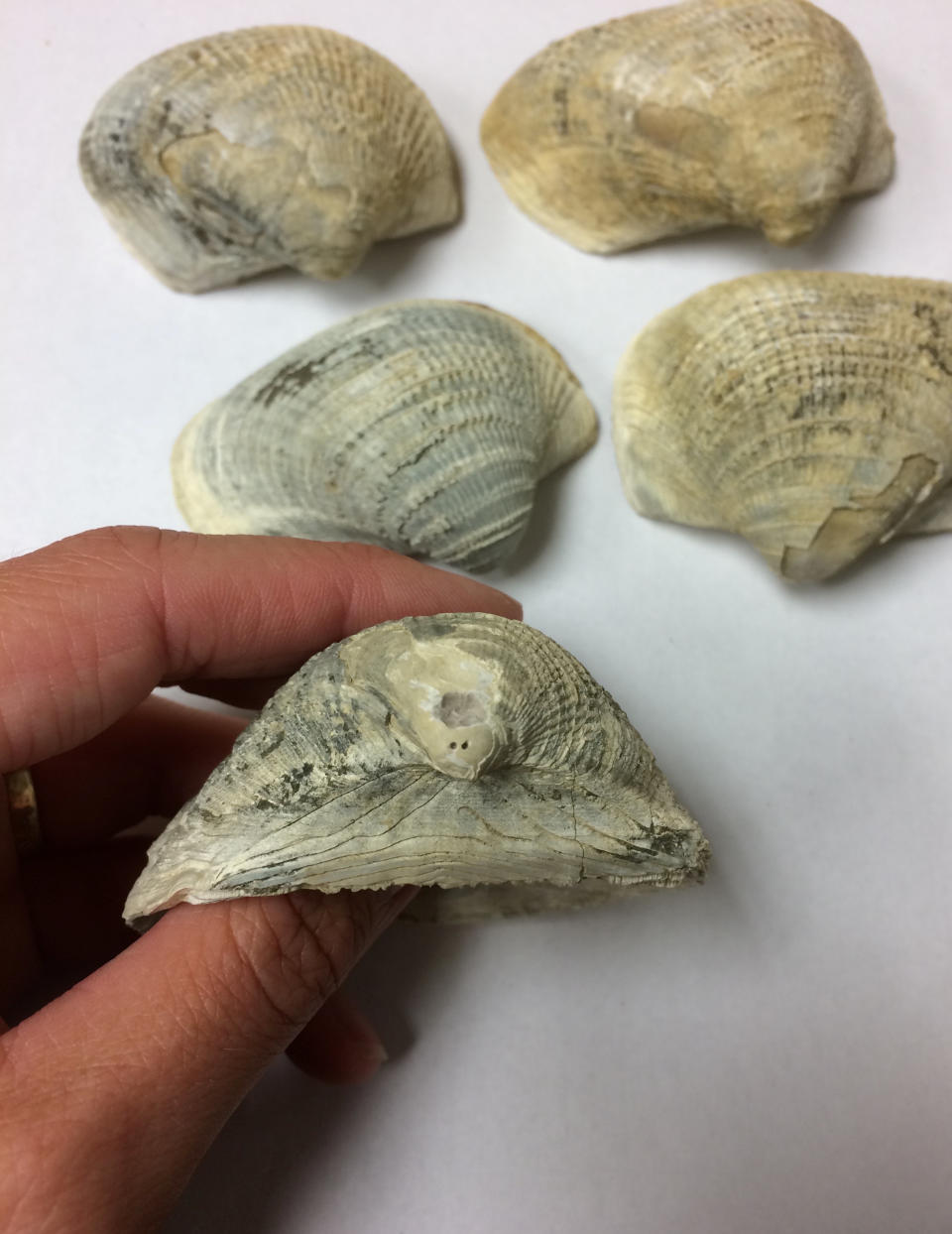Huge volcanic eruptions in India may have helped wipe out the dinosaurs, new research suggests

It’s widely accepted that a giant asteroid hitting Earth is what spelled the end of the dinosaurs.
But new research has suggested that massive volcanic eruptions in the Deccan Traps province of India lasting a million years may also have played a role in the great lizards’ extinction.
Scientists analysed fossil marine mollusc shells including oysters and clams from around the world and found what they said appear to be signs of sudden warming of the oceans as well as elevated mercury concentrations.
Volcanoes are the largest natural source of mercury entering the atmosphere, they said.

When the researchers on the University of Michigan-led study compared the mercury levels from the ancient shells to concentrations in freshwater clam shells at a present-day site of industrial mercury pollution in Virginia, the levels were roughly equivalent.
Their study, published in the journal Nature Communications, suggests dinosaurs may have survived the asteroid impact but that the long-running eruptions from the Deccan Traps – which began before the asteroid hit – may have poisoned the air and seas with mercury, spelling their final demise.
READ MORE
New dinosaur discovered after lying in museum for 30 years
New species of dinosaur-era bird discovered
Insects could die out ‘in worst extinction since the dinosaurs’, experts warn
“For the first time, we can provide insights into the distinct climatic and environmental impacts of Deccan Traps volcanism by analysing a single material,” said lead author Kyle Meyer, who is now at Portland State University in Oregon.
“It was incredibly surprising to see that the exact same samples where marine temperatures showed an abrupt warming signal also exhibited the highest mercury concentrations, and that these concentrations were of similar magnitude to a site of significant modern industrial mercury contamination.”

Mercury is a toxic trace metal that poses a health threat to humans, fish and wildlife.
The site the researchers collected clam shells from at Virginia’s South River is contaminated with mercury and residents are warned not to eat fish from it.
Sierra Petersen, co-author of the study, said: “The modern site has a fishing ban for humans because of high mercury levels.
“So, imagine the environmental impact of having this level of mercury contamination globally for tens to hundreds of thousands of years.”
The researchers think the fossilised shells of oysters and clams could simultaneously record a rise in sea temperature as well as the mercury contamination associated with the Deccan Traps eruptions.
They used a new technique to analyse the composition of the shells to determine marine temperatures as well as measuring the amount of mercury in the fossil shells, which were collected in Antarctica, the United States, Argentina, India, Egypt, Libya and Sweden.
“Mercury anomalies had been documented in sediments but never before in shells,” said Ms Petersen.
“Having the ability to reconstruct both climate and a volcanism indicator in the exact same materials helps us circumvent lots of problems related to relative dating. So, one of the big firsts in this study is the technical proof of concept.”

 Yahoo News
Yahoo News 

